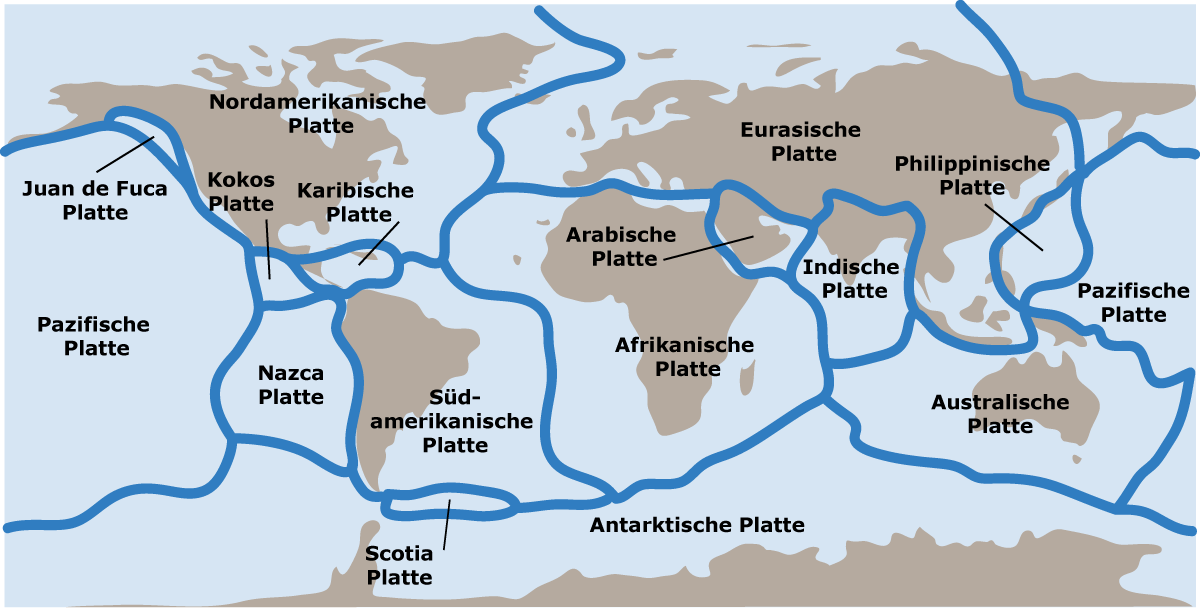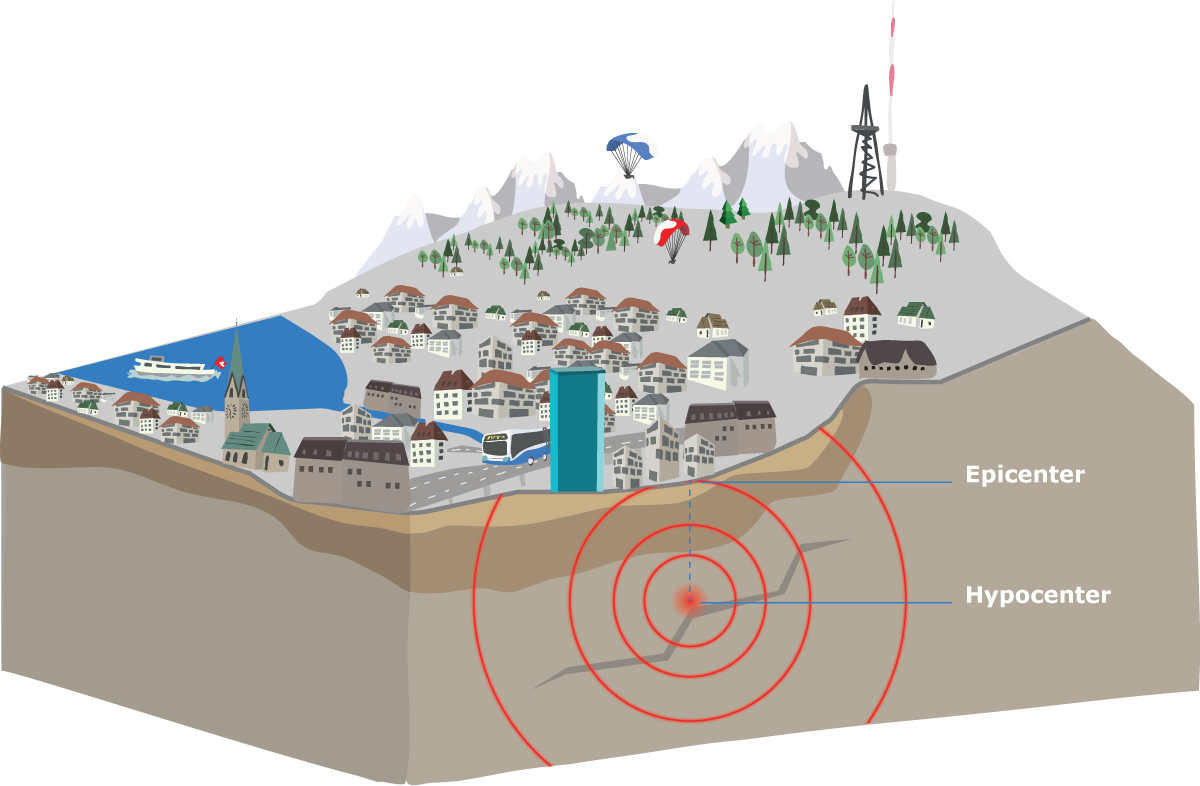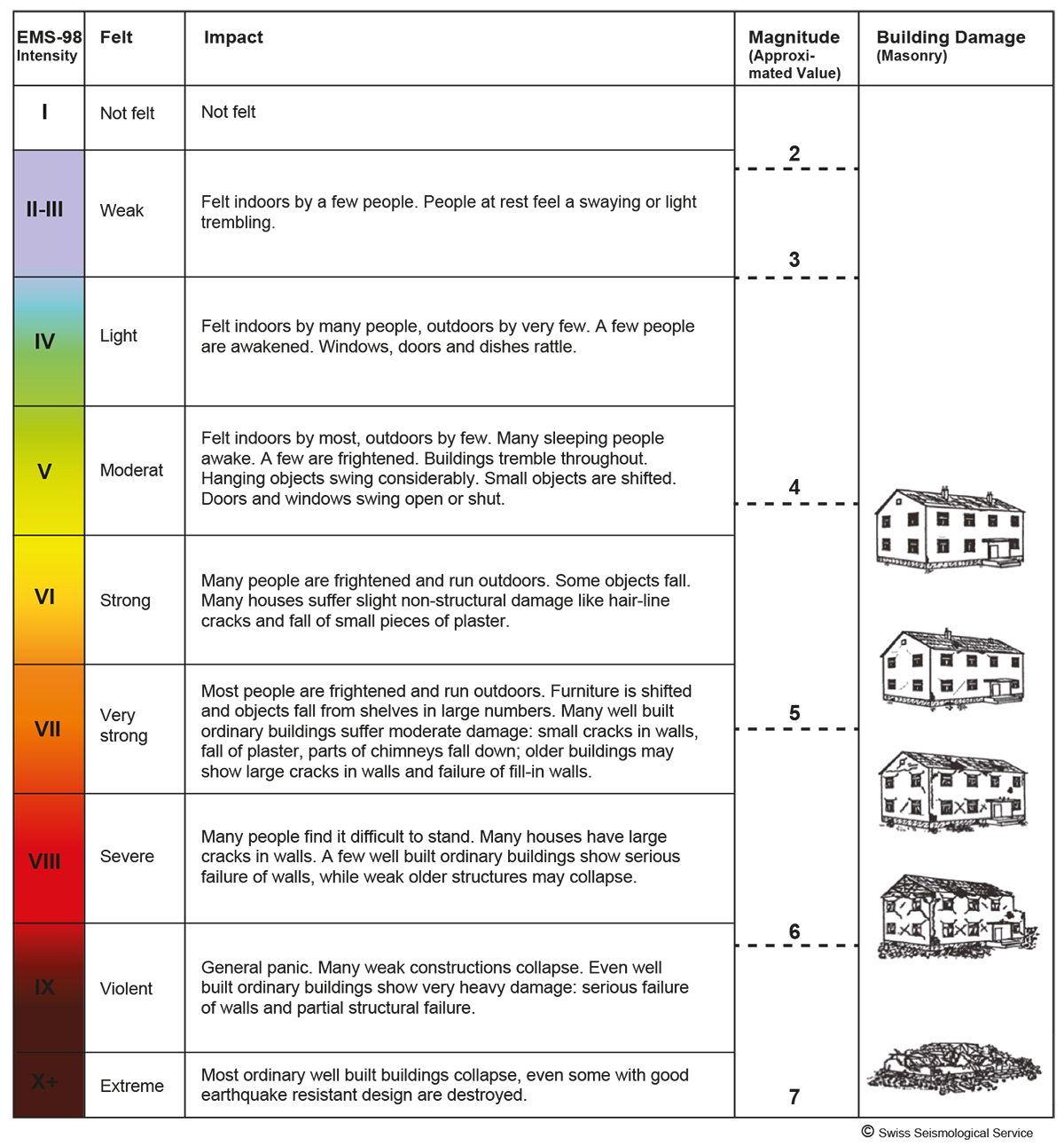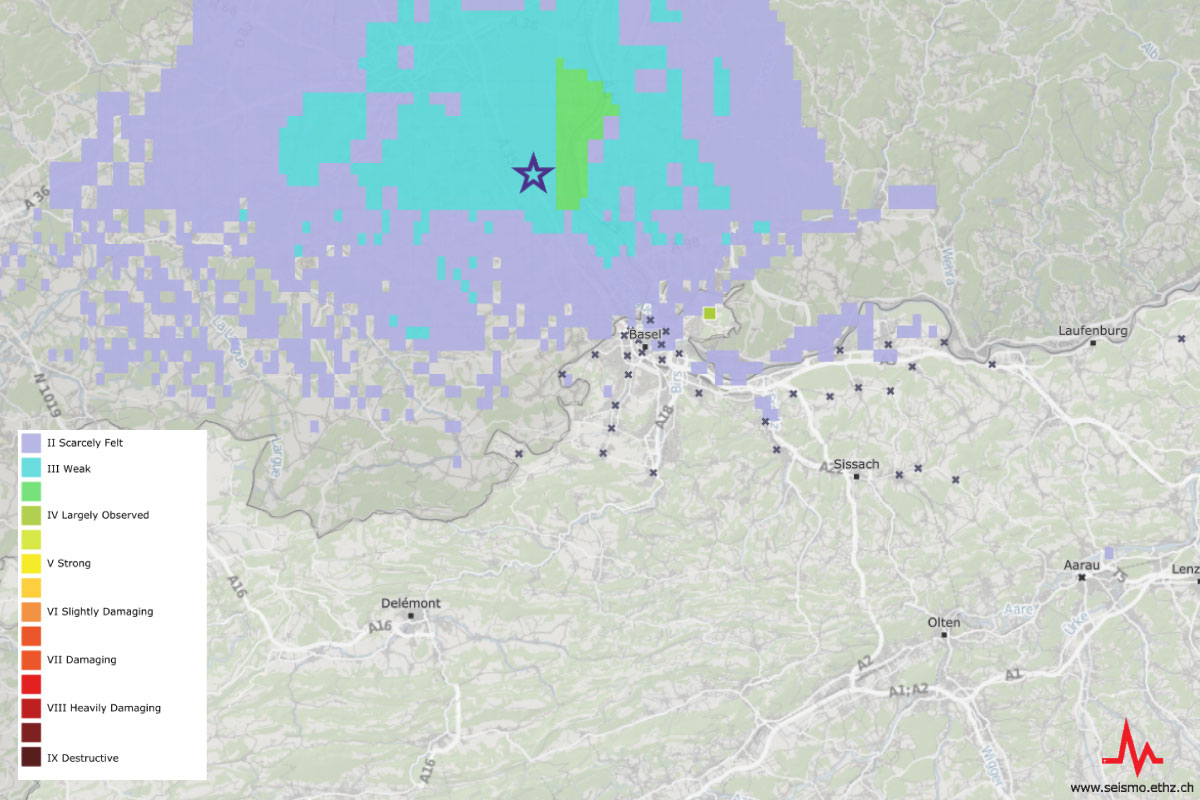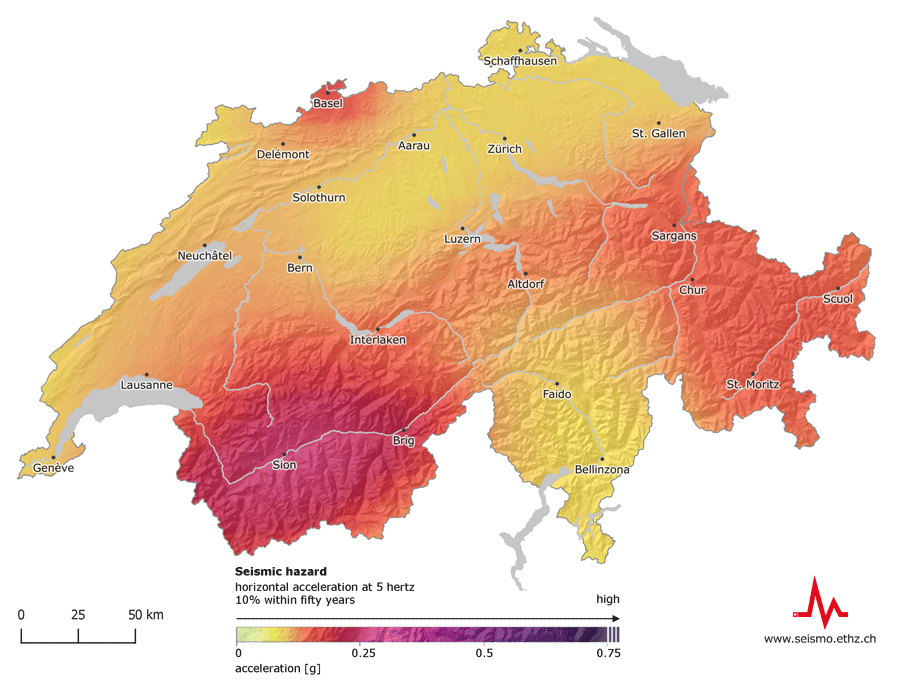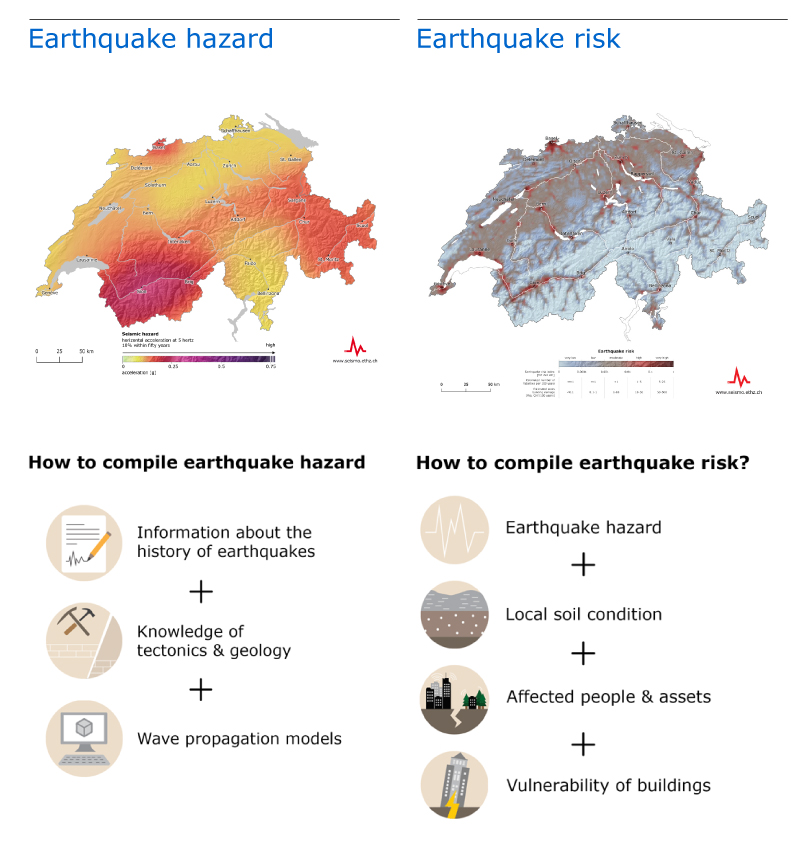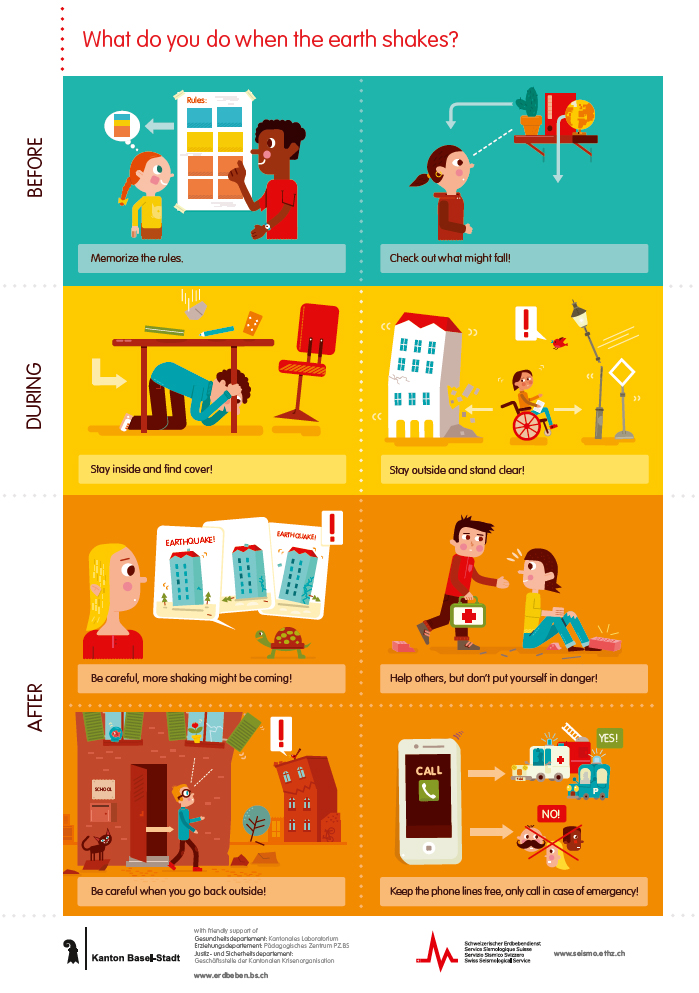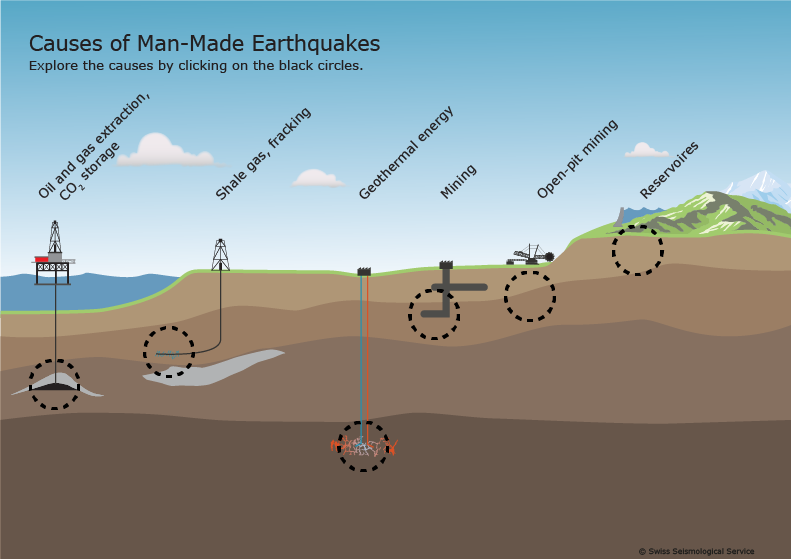EarthquakeExpert
1) Why do earthquakes occur?
a) Because of pressures released along fractures in the earth's crust
Correct!
b) Because of lunar magnetic waves
Sorry, that's incorrect! The correct answer is: a) Because of pressures released along fractures in the earth's crust
c) Because of electrical discharges in the earth's inner core
Sorry, that's incorrect! The correct answer is: a) Because of pressures released along fractures in the earth's crust
Learn More
The continuous motion of tectonic plates causes a steady build-up of pressure in the rock strata along the fault lines as well as inside the plates themselves until the stress is sufficiently great that it is released in a sudden, jerky movement. The released seismic energy propagates as waves through the ground and over its surface, causing the shaking we feel as earthquakes.
2) What is the epicentre of an earthquake?
a) The duration of tremors
Sorry, that's incorrect! The correct answer is: b) The place on the earth's surface directly above the seismic focus of an earthquake.
b) The place on the earth's surface directly above the seismic focus of an earthquake.
Correct!
c) The area over which an earthquake is felt.
Sorry, that's incorrect! The correct answer is: b) The place on the Earth's surface directly above the seismic focus of an earthquake.
3) What does the Richter scale measure?
a) The strength of an earthquake
Correct!
b) The number of damaged buildings
Sorry, that's incorrect! The correct answer is: a) The strength of an earthquake
c) The ground speed during an earthquake
Sorry, that's incorrect! The correct answer is: a) The strength of an earthquake
Learn More
The values along the Richter scale correspond to the strength of an earthquake, referred to as its 'magnitude'. The scale was developed by American scientist Charles F. Richter in 1935. Even today, the size of an earthquake in Switzerland is usually expressed in units on the Richter scale (MLhc local magnitude). However, as time passed it became apparent that the Richter scale is only suitable for measuring earthquakes within a given range of magnitudes and distances. For this reason, other magnitude scales were developed.
4) Above what magnitude can an earthquake cause damage?
a) 15
Sorry, that's incorrect! The correct answer is: c) approximately 5
b) 2.5
Sorry, that's incorrect! The correct answer is: c) approximately 5
c) approximately 5
Correct!
Learn More
Earthquakes of intensities ranging from VI to VII can potentially damage the types of buildings generally constructed in Switzerland. This corresponds roughly to a magnitude of 5.
Destructive damage can be expected above an intensity of IX or a magnitude of around 6.
Close to the epicentre, some earthquakes above a magnitude of 2.5 can already be felt.
5) What is the intensity of an earthquake?
a) The same as its magnitude
Sorry, that's incorrect! The correct answer is: b) The impacts of an earthquake on the Earth's surface.
b) The impacts of an earthquake on the Earth's surface.
Correct!
c) The ground speed during an earthquake
Sorry, that's incorrect! The correct answer is: b) The impacts of an earthquake on the Earth's surface.
Learn More
The impacts of an earthquake on the earth's surface (i.e. on buildings, people, the environment and infrastructure) are described using a 12-point intensity scale.
The intensity of an earthquake depends on its location and is determined by its magnitude, the distance from the earthquake epicentre and the geology (subsurface).
One way the Swiss Seismological Service (SED) ascertains how and where earthquakes are felt is by means of an online questionnaire that the public can fill in.
6) Can earthquakes be predicted?
a) Yes
Sorry, that's incorrect! The correct answer is: b) No
b) No
Correct!
b) It should be possible by 2040.
Sorry, that's incorrect! The correct answer is: b) No
Learn More
No, for decades now scientists have been looking for reliable warning signs of an impending earthquake, but so far their search has been in vain. Perhaps earthquakes are natural hazards, chaotic, non-linear processes that we will never be able to reliably predict. Or maybe scientists will find a hot lead yet. Only time will tell!
However, something we can calculate is the earthquake (or seismic) hazard and risk. Earthquake hazard indicates where and how frequently over a set time period certain shaking can be expected to occur. Earthquake risk quantifies the possible effects of earthquakes on buildings and the associated financial and human losses.
7) Earthquake hazard and earthquake risk have the same meaning and can be used as synonyms, correct?
a) Yes, both terms have the same meaning.
Sorry, that's incorrect! The correct answer is: b) No, these terms have different meanings.
b) No, these terms have different meanings.
Correct!
Learn More
Although the terms are often mistakenly used as synonyms, they have different meanings. Therefore, always be careful when using these two terms:
While earthquake hazard estimates how often and how strongly the ground could shake at given locations in the future, earthquake risk quantifies the possible effects of earthquakes on buildings and the associated financial and human losses.
8) What should you do in the event of an earthquake?
a) Grab your most important belongings and drive off in your car.
Sorry, that's incorrect! The correct answer is: b) Seek cover (e.g. under a sturdy table)
b) Seek cover (e.g. under a sturdy table)
Correct!
c) Stand in the middle of the room to feel the quake more clearly.
Sorry, that's incorrect! The correct answer is: b) Seek cover (e.g. under a sturdy table)
Learn More
Before a strong earthquake
Buildings should be built to withstand earthquakes. Any items that could fall down should be secured.
During a strong earthquake
If inside a building, you should seek cover, move away from any windows and shelves, and wait until the environment is safe.
If outside or in a vehicle, you should stay a safe distance from buildings, bridges, trees, pylons and tunnels. Stop the vehicle and do not leave it during the quake.
After a strong earthquake
You should brace yourself for aftershocks and use the radio, television and internet to stay informed.
9) What are induced earthquakes?
a) Earthquakes triggered by human activities.
Correct!
b) Earthquake occurring at the bottom of a lake or sea.
Sorry, that's incorrect! The correct answer is: a) Earthquakes triggered by human activities.
c) Earthquakes with a hypocentre close to the Earth's surface.
Sorry, that's incorrect! The correct answer is: a) Earthquakes triggered by human activities.
Learn More
Induced earthquakes are earthquakes triggered by human activity. In Switzerland, man-made quakes occur are mainly in connection with related to geothermal energy projects. However, earthquakes can also be triggered by other underground activities. For example when injecting CO2 or wastewater into the subsurface in the context of conventional or unconventional extraction of crude oil or gas through fracking or in mining or tunnel construction. Furthermore, man-made alterations to the earth’s surface can also trigger earthquakes, for example when filling or draining reservoirs with water.
Result
Earthquake novice
There's still room for improvement!
Take a look at our section of frequently asked questions (FAQs), which succinctly explains key information on earthquakes. Or build on your knowledge by playing a few earthquake games!
Earthquake apprentice
A respectable result, but you're not yet quite an earthquake expert!
Take a look at our section of frequently asked questions (FAQs), which succinctly explains key information on earthquakes. Or build on your knowledge by playing a few earthquake games!
Earthquake expert
Congratulations, you're very knowledgeable about earthquakes!
Yet there are bound to be a few facts left to learn. For example, in our Snapshots section you can find out what icequakes are and what seismometers are measuring on Mars. Or try playing a few earthquake games!
